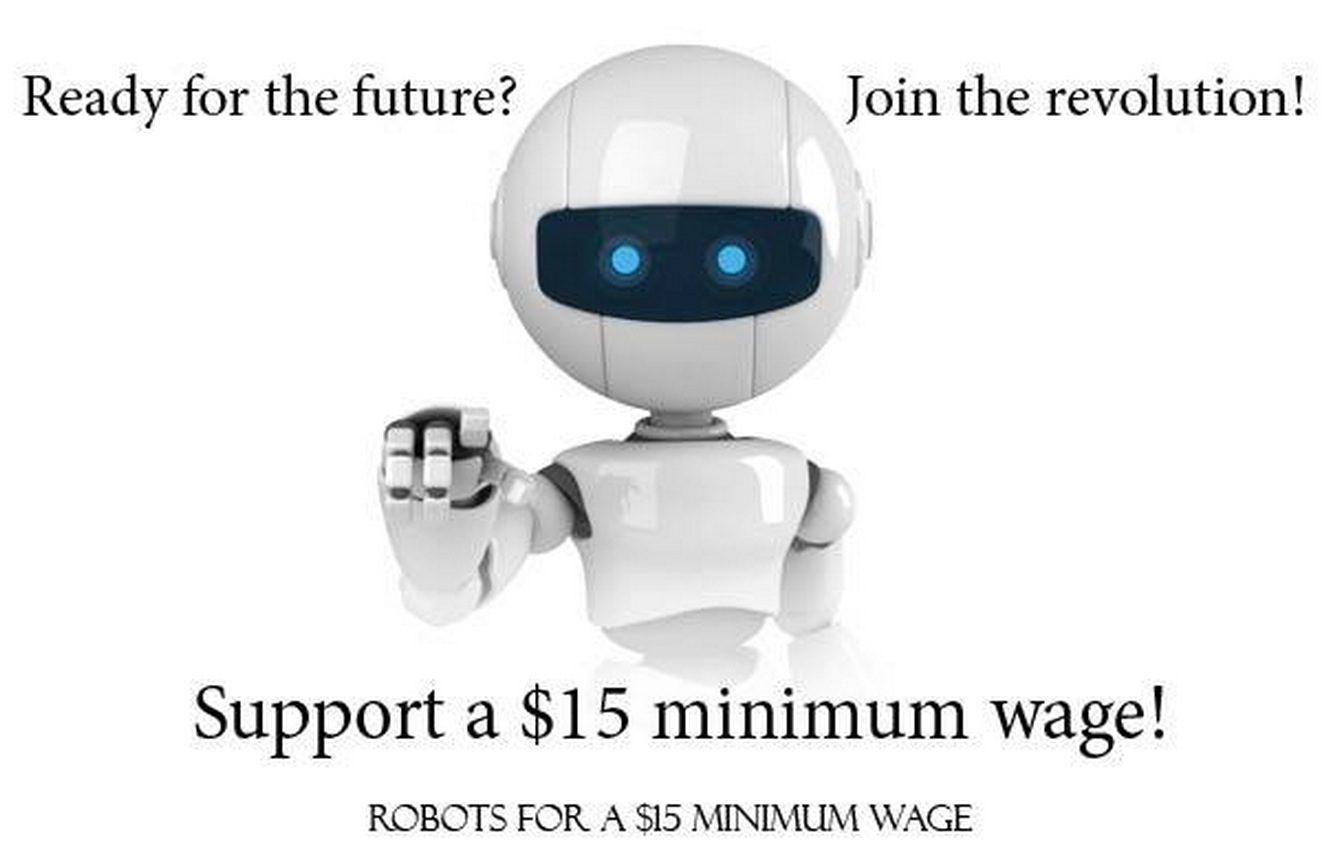What exactly is a minimum wage, and what does it mean for the future of jobs in America?
To unions and activist groups, the minimum wage is a rallying cry around which the impoverished and economically illiterate organize. To the workers demanding an increased minimum wage, it represents hope for a brighter future.
Unfortunately for minimum wage supporters, hope doesn’t translate into reality. The fact of the matter is that the minimum wage is a government mandate that outlaws jobs valued below a certain point.
Let me be perfectly clear: the minimum wage is a ban on low paying jobs.
So what happens when companies are banned from hiring folks to work low paying jobs?
Enter the machines.
University of Oxford Associate Professor Michael Osborne, a machine-learning expert, recently examined hundreds of occupations in the United States and found that as many as 47% are likely to be replaced by machines. According to Professor Osborne, jobs in traditionally low-wage occupations such as food service and transportation are most likely to be replaced by machines.
If you have ever scanned your own groceries, checked in at the airport at a kiosk, or ordered food via tablet, you have taken part in an economy that is in the process of realizing, for better or worse, human workers are, in many cases, replaceable.
The true winners in a world in which there is a $15 per hour minimum wage are those who produce machines that can replace workers, the corporations that use them, and consumers. Although robots need some supervision and maintenance, they don’t demand healthcare, sick days, or other ancillary benefits that affect companies’ bottom lines, and can create efficiencies reflected in the price of goods and services for consumers.
In an interview with the Brisbane Times, Professor Osborne points out that while certain technological development, such as textile machines in the 19th century, created short periods of high unemployment, the effects were temporary. However, 19th century textile workers did not lose their jobs to machines only to face a blanket ban on all low-paying jobs, as they would under a $15 minimum wage.
As we stand on the precipice of a robotic revolution, let’s not go out of our way to make sure that low-wage workers have no place in our workforce. Let’s do what we can to save American jobs, even if those jobs are far from perfect.




